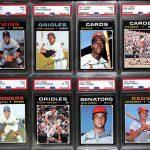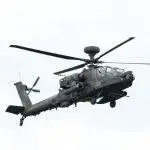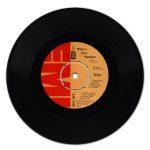Fish Hook Size Chart – All You Need To Know to catch the next fish
Shouldn’t it be as easy as looking at a standard fishhook size chart and finding a hook meant for your fish species? Sadly, life is never that easy for anglers. You must wade through multiple measurements to make your point as an angler. In this article, we highlight the most important fishing hook sizes.
There are many fishing hooks as there are many fish to catch with them. Well, there may not be many hook types but then there’s more to them than just being a bent piece of metal used with a bait. Much more that you need to know!

In this article, you will learn about this important piece of tackle. You will also get a grip on the most popular types of fishing hooks and fish hook size chart. Looking treble hook sizes? Click here
Fishing spinning reel sizes you can find here, the full fishing rod length guide is here
Discover the Fish Hook Size Chart
| Type of Hook | Size Range in (Inches and CM) | Type of Fish |
| The Baitholder Hook | 4-6 inches 10.16 – 15.24 cm | Crappie, Sunfish and Perch, Pensky Panfish Bass |
| Octopus Hook | 4-6 inches 10.16 – 15.24 cm | Crappie and Perch Bass and Pike |
| Aberdeen Hook | Smaller size 4 inches and 10.16 cm 2 and 1/0 inches 5.08 and 2.54/0 cm | Panfish and Trout Catfish |
| Wide Gap Hook | 2/0 inches 5.08/0 cm | largemouth bass |
| Treble Hook | 4 inches 10.16 cm 12 inches 30.48 cm | Catfish Trout |
| Worm Hook | 3/0 inches 7.62/0 cm | Bass |
| Circle Hook | 5/0 inches 12.7/0 cm | Catfish |
| Sickle Hook | 4-12 inches 10.16 – 30.48 cm | Big Salmon and Monster Steelhead |
Although many variables could affect the hook sizes and the type of fish species that can be targeted using the hooks, the following information generalizes the above information. Here, you get information about what you really need to know.
Fish hook size by type of fish
| Type of Fish | Hook Sizes in (Inches and CM) |
| Bass | 5-4/0 inches 12.7/10.16/0 cm |
| Catfish | 2-6/0 inches 5.08-15.24/0 cm |
| Bullheads | 7-1 inches 17.78-2.54 cm |
| Carp | 3-1inches 7.62-2.54 cm |
| Walleye | 3-2/0 inches 7.62-5.08/0 cm |
| Panfish | 8-3 inches 20.32-7.62 cm |
| Pike | 1/0-6/0 inches 2.54/0-15.24/0 cm |
| Striped Bass | 1/0-4/0 inches 2.54/0-10.16/0 cm |
| Trout | 8-4 inches 20.32-10.16 cm |
Related: Fishing Rod Length Guide – The Complete Guide, Fishing Gear Size – The Complete Guide,Spinning Reel Sizes – How To Choose The Right Reel Size to go fishing
An Overview of Fishing Hook Sizes
Let’s take an in-depth look at fishing hooks. Have you ever walked into several bait and tackle shops and are presented with various hooks in different sizes, shapes, and colors?
What Size Treble Hooks Do I need to Use?
The following sizes will be a perfect fit for most waters and situations. But keep in mind though that these are simply general recommendations. Testing is the best way to find the perfect hook for your water and fish.
| Species | Treble Hook Size |
| Northern Pike | 2-6 |
| Musky | 2-6 |
| Bass | 4-8 |
| Walleye | 6-10 |
| Perch | 8-12 |
| Crappie | 12-14 |
| Catfish | 2-4 |
| Trout | 6-10 |
Here, we will provide a guide to help you choose the right hook sizes. Note that the hook sizes are not an exact universal standard but rather, they are a general description.
What Determines Hook Sizes in the Fishing Hook Size Chart
Fishing hook brands determine types of fishing hooks and hook sizes. The various brands have different-sized hooks of certain sizes.
Fishing hook sizes are not exact but they are roughly equivalent. For example, a size 6 hook produced by Eagle Claw company may not be the same size as an exact hook produced by Gamakatsu hook.
What Determines Hooks’ Measurements in the Fishing Hook Size Chart
Hooks’ measurements are determined by ‘sizes’ denoted as # and ‘aughts’ denoted as /. Sizes are usually smaller than the aughts. The aughts are the median of the scale. On the smaller side of the spectrum, you would have a size 10; on the larger side, you would have a size 10/0 (Ten-Aught). Size 1/0 is generally at the middle of the scale.
Therefore, it is true that sizes are the inverse of aughts. When the sizes get larger, the hooks get smaller; when the aughts get larger, the hooks get larger. For example, a size 6 of barbless hooks would be 10 times smaller than a size 6/0 of the same hooks.
How to choose the right size treble hook for fishing explained (video)
Related: Fishing Rod Length Guide – The Complete Guide, Fishing Gear Size – The Complete Guide,Spinning Reel Sizes – How To Choose The Right Reel Size to go fishing
Choosing a Hook
The most important characteristic you as an angler should consider when purchasing hooks is the size. If you are seeking to catch smaller fish, then a big hook would not work for you. The smaller fish would strike on the hook and end up with a hook that is stripped of its bait.
If a hook is too small, you would not be able to catch a larger fish since the fish might swallow it entirely. The small hooks are weaker and would tear out of a mouth of a larger fish. Often, the small hooks do not discriminate between the small and large fish, which means that you might unintentionally catch both. It is also important for you to understand that deep hooking a fish is traumatic for the fish. It also makes it difficult to practice catch and release successfully. Therefore, for you to succeed in fishing, you need to know the fishing hooks to choose from.
If you want to catch the smaller fish species, the smaller hooks would be effective for you. This is because they are difficult for fish to detect, easier to set, can be cast further, and are less affected by current. They also fit easily into the fish mouth. For you as a beginner, it is important to start out with a prepackaged fishing hook selection that contains a variety of fishing hook sizes and hook types.
Consider the degree of sweeping bend when getting a hook since it is critical to hook design. Some hooks have sweeping bends that are large enough to hold more baits e.g Kahle hooks while others reduce the amount of bait you can use. The size of fishing hooks you select should be a compromise. The best rule of thumb for you as an angler when it comes to selecting the right hook size is that you should ensure that the size of the bait should determine the size of the hook.
What Determines the Range of Fish Hook Size
When you go fishing, the hook size is the most important consideration before you knot the hook to the line. There is a broad range of hook sizes that you can choose from.
Fishing hook sizes are determined by a range of sizes starting with the smallest size (32) to the larger hooks (19/0). The size range starts from 32 to 1, and the larger the number, the smaller the hook. The hook sizes range from 1/0 also called a one aught to 19/0, the larger the number, the large the size of the hook.
You can also choose a wide range of fishing hooks from sizes 4,1,1/0,6/0 among others. Essentially, fishing hook sizes begin in the middle and work their way out. The smallest hook sizes start from size 30, 29, 28,27 up to size 1. After size 1, you have size 1/0, 2/0,3/0 all the way to 27/0. You can use size 27/0 to catch the literal sea monsters.
As mentioned earlier, there is no standard for the hook sizes. A 1/0 jig hook would not be the same as a 1/0 circle hook. Also, type A circle hooks made by Eagle Claw would probably be bigger than the same hooks made by Gamakatsu, and smaller than those made by Mustad. In this case, size is the only factor involved.
Fishing Hooks sizes explained
Common Types of Fishing Hooks and Their Sizes
The Baitholder Hook
This is the best hook for beginners or simply they are beginner fishing hooks. The hook is versatile and allows you to have successful fishing as a beginner. You can use this type of fishing hook with insects, worms, and grocery store concoctions. You can also use natural bait because the hook has 2 barbs on the shank that prevents the bait from falling off the hook.
You can use a size 4, baitholder hook with a 1” cut of a worm. The hook is effective for catching freshwater fish species like crappies, Sunfish, and Perch. Instead of using worms, you can alternatively use kernels of corn, balled pieces of bread, or even slices of hotdog. Avid anglers can use a size 6 to catch Pensky panfish. However, it can be challenging for an average angler to bait and remove from fish the same size as the hook.
You can use a full nightcrawler for Walleye with a larger size 2 hook and a larger size 1/0 with a full nightcrawler on a Texas or Carolina Rig for Bass. For this, use the loop knots to have open loops that you can tie a line to the end of the rig to have an interconnected system for attaching tackle parts.
Octopus Hook for Live Leeches and Minnows
An Octopus hook has a short shank with a wide gap. This feature makes it effective for catching large fish. For this, you can use a size 6 or 4 with minnows and small leeches to catch Crappie and Perch.
You can use medium size 4 and 2 on larger leeches and minnows of size 3-4. A hook of size 1/0 is great with larger minnows of sizes 4-6 that are used to target Bass and Pike.
Red is a popular color for octopus hooks, which signals that you can use the hook in deeper water.
Aberdeen Hooks for Insects and Removal
The Aberdeen hook has a thin and long wire shank. The shank makes the hook effective for pairing with a fragile bait, keeps the bait intact, removes swallowed hooks, and frees up your line when it is in a snag. The long shank also allows you to easily remove the hook.
Aberdeen hook is also great because of its ability to bend, and this allows it to serve its purpose. When you are snagged, the hook assumes a gradual bend and twist for an easier release. The thin wire gives this hook a great design for bottom fishing cats.
For the Aberdeen hook, use a smaller size 4 for insects like grasshoppers and crickets to target panfish and trout. You can use a size 2 and 1/0 with nightcrawlers to target catfish.
Wide Gap Hooks
A gap hook, though not that common is used with cut-gait or large minnows. You can think of this hook as a narrower version of the circle hooks.
The wide gap hook allows you to target big fish species such as largemouth bass. Use a size 2/0 while using live bait presentations or when covering your hook shank with cut bait.
Treble Hooks for Gough Bait and Lure Replacement
Treble hooks are often associated with lures including spoons, spinners, and crankbaits. You can also use treble hooks for nuggets and dough baits. The 3 prongs on the hooks ensure that the soluble bait stays longer on the hooks as opposed to if the hooks had single barbed edges.
A size 4 treble hook is recommended if you are targeting catfish. You can pair the hook with dough bait. A size 12 treble hook which is smaller is recommended if you are targeting trout, precisely, secure the hook with trout nuggets.
Most of the common lures with the popular sizes use a size 6 treble hook. Note that it is advisable to keep a few of these lures on hand for the dull or rusting hooks that require replacement.
Worm Hooks for Soft Plastic Baits
Most bass fishing anglers prefer the worm hook paired with soft plastic worms. These artificial lures are typically 4-8’ in length.
The most popular worm hook is the EWG type and its common hook sizes range is from size 2/0 to 4/0. You can use a size 3/0 EWG worm hook for most of the soft plastic bass fishing lures.
The EWG worm hooks are often paired with thicker diameter artificial lures such as stick worms, beaver baits, soft jerk baits, and creature baits. You can use these hooks with every style.
The round bend worm hook is a popular option used with braid in finesse situations to target slender plastic worms. These hooks are paired with finesse worms and ribbon worms for a concealed presentation. Use size 1/0 round bend hook for worms that are 6 to 7 inches and size 2/0 for worms that are 8-10 inches.
Circle Hooks
The circle hooks would work better if you are a saltwater angler. These hooks are great for your conservation efforts. Circle hooks have an eye and shank similar to the jig hook, but a rounder strange bend with an alarming angle point at a 90-degree angle to the shank. You might think that this angle pointing is strange and ineffective, but that is far from it.
However, the circle hooks are rarely used in freshwater since they facilitate the cut bait more effectively.
You can use size 5/0 circle hooks paired with cut pieces of carp or shad when targeting catfish.
Sickle Hook
The sickle hook is a type of fishing hook that does not have the normal gradual bend in the shank. Instead, its shank assumes a 45-degree angle bend that resembles a sickle.
You can use this hook paired with live bait if you are a freshwater fisherman.
The sickle hook is perfect if you target big salmon and monster steelhead. The recommended hook size is size 4-12.
Braid Fishing
Most bass fishing anglers prefer braid fishing. As an angler, you would prefer braid lines because they do not stretch much, they have abrasion resistance and absurd tensile strength and they make fishing rigs sensitive to fish bites. Use braid lines when fishing in deep bodies of water and when targeting fish with a gentle bite. If you are considering braid fishing, use the Palomar knot since it is the best when using a braided fishing line.
The Palomar knot is one of the strongest fishing knots used by most anglers. You can use this knot to secure a terminal tackle such as a swivel or a hook to the end of your fishing line. This type of knot would also be effective for fly anglers. For fly anglers or adventurous fly anglers, you can fasten your fly to a leader when fly fishing. You can click here to read more on how to tie the Palomar knot.
However, you should note that the minimal stretch of the braided line can make the frequency of a hard-hitting fish break the line. Ensure that you have the mentioned hook sizes in your tackle box.
All fishing gear sizes you can find here
Conclusion
Fishing hook sizes can be confusing; therefore, it is important to reference our fish hook size chart. Choosing the right hook size is determined by an angler’s ability to know the hook sizes and types in the market. The good news is that we have made things easier for you by creating a fish hook size chart.
We hope this guide was helpful! For any questions or inquiries, reach out to us via the comment section.
Picture in this post by Anne Nygård on Unsplash
Related Fishing and hobbies Size charts
- O’Neill Wetsuit Size Charts
- Poker Chip Size Guide
- Baseball Card Size Guide
- Bocce Ball Court Size and Dimensions
- Pool Cue Length – Why it is Important?
- Helicopter Sizes and Different Types
- Chessboard Dimensions: What Is The Size Of It?
- Vinyl Record Size and Dimensions
- Ping-Pong Ball Size Chart
- Dolls Size: What Are the Different Sizes of Dolls?
- Bowling Ball Size and Dimensions
- What is the Size of a Playing Card?
- Basketball Size Guide
- Volleyball Size Chart
- Beer Pong Table Dimensions
- Tent Size Chart for Road, Wedding…

















